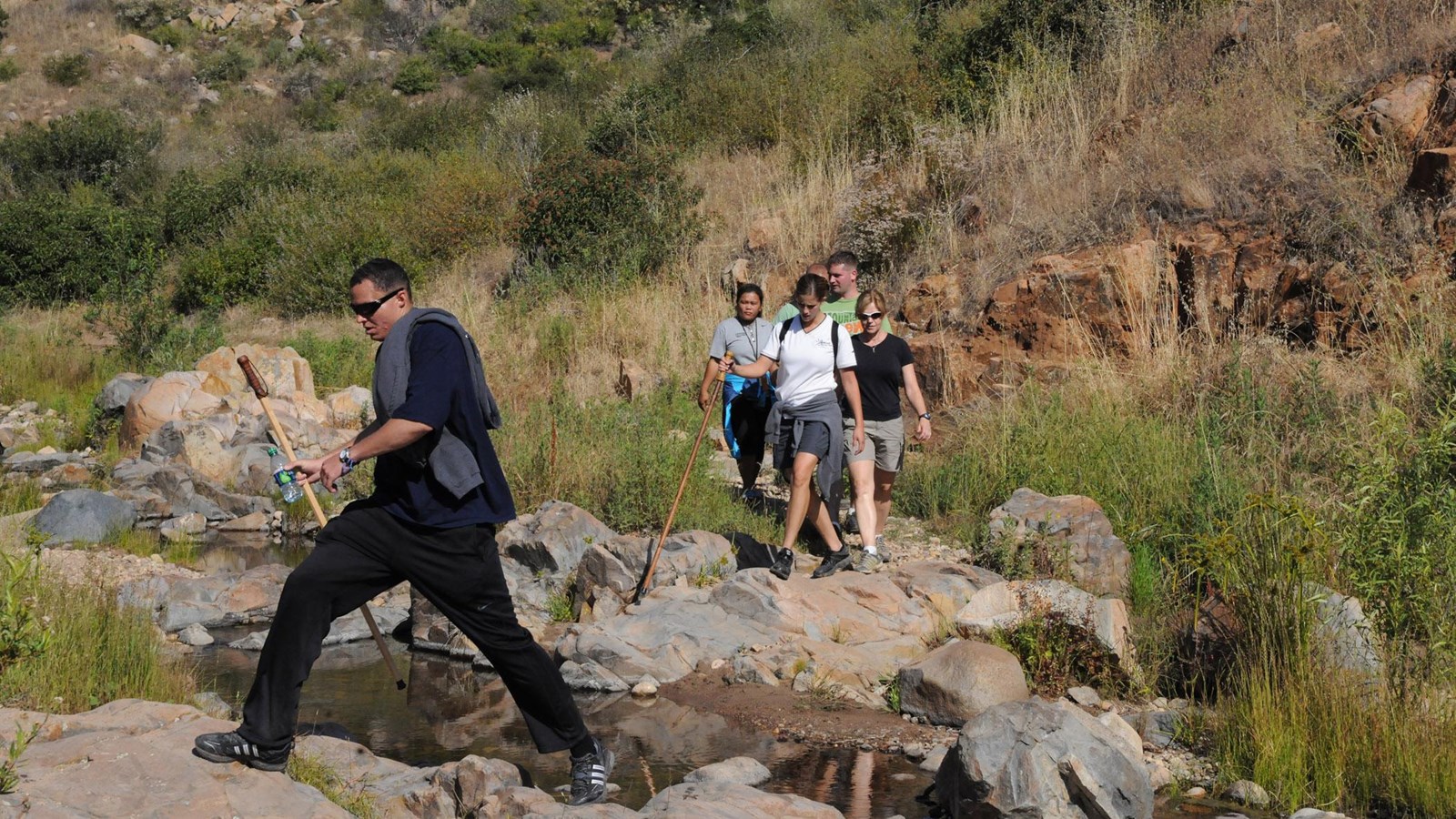Last updated: July 4, 2025
Place
Mission Trails Regional Park

Quick Facts
Location:
San Diego, CA
MANAGED BY:
The 7,220 acres of Mission Trails Regional Park make it not only the largest city park in San Diego, but the largest in California and sixth largest in the country. At Mission Trails, visitors can hike 65 miles of trails that hug wild canyons and climb to mountaintops. Stunning vistas and colorful wildflowers await, including the summit of Cowles Mountain, the highest peak in San Diego and the most popular hike in the park.
Hiking is not the only activity available at Mission Trails; numerous trails also accommodate horseback riders and mountain bikers. Park staff and volunteers are on hand to offer guided nature walks to visitors. And if you feel like spending the night, you can also camp at the Kumeyaay Lake Campground.
Mission Trails also has a long and rich human history. The Kumeyaay people have called this area their home since time immemorial and park exhibits provide information and displays about their long and ongoing history. Spanish colonization began in 1774 and the main mission in San Diego was located near this park and adjacent to the Kumeyaay village of Nipaguay. To water their crops and provide drinking water for their mission, the Spanish colonizers coerced Kumeyaay people to build the Mission Dam between 1809 and 1815. This dam can still be toured and is located in the northeast portion of the park.
Much of the park was mission property until 1846, when it was granted to Santiago Arguello—a local politician and military officer—by the Mexican government. After the conquest of California by the United States, Mission Trails had numerous uses including ranching, granite mining, and farming. Granite mined from Mission Gorge was used to construct the breakwater in San Diego Bay that can be seen from Cabrillo National Monument. This area also served as a military training zone where artillery and tank training occurred for World War I and other training including live fire occurred during World War II. Unexploded ordnance remains a hazard in the park to this day because of this training.
In 1960, the military area that is now Mission Trails Regional Park was declared surplus to military needs. The City of San Diego acquired substantial amounts of this land and began the process of converting it to the park it is today. The park was established in 1974 and has grown through several acquisitions into a massive and beloved public space.
Hiking is not the only activity available at Mission Trails; numerous trails also accommodate horseback riders and mountain bikers. Park staff and volunteers are on hand to offer guided nature walks to visitors. And if you feel like spending the night, you can also camp at the Kumeyaay Lake Campground.
Mission Trails also has a long and rich human history. The Kumeyaay people have called this area their home since time immemorial and park exhibits provide information and displays about their long and ongoing history. Spanish colonization began in 1774 and the main mission in San Diego was located near this park and adjacent to the Kumeyaay village of Nipaguay. To water their crops and provide drinking water for their mission, the Spanish colonizers coerced Kumeyaay people to build the Mission Dam between 1809 and 1815. This dam can still be toured and is located in the northeast portion of the park.
Much of the park was mission property until 1846, when it was granted to Santiago Arguello—a local politician and military officer—by the Mexican government. After the conquest of California by the United States, Mission Trails had numerous uses including ranching, granite mining, and farming. Granite mined from Mission Gorge was used to construct the breakwater in San Diego Bay that can be seen from Cabrillo National Monument. This area also served as a military training zone where artillery and tank training occurred for World War I and other training including live fire occurred during World War II. Unexploded ordnance remains a hazard in the park to this day because of this training.
In 1960, the military area that is now Mission Trails Regional Park was declared surplus to military needs. The City of San Diego acquired substantial amounts of this land and began the process of converting it to the park it is today. The park was established in 1974 and has grown through several acquisitions into a massive and beloved public space.
